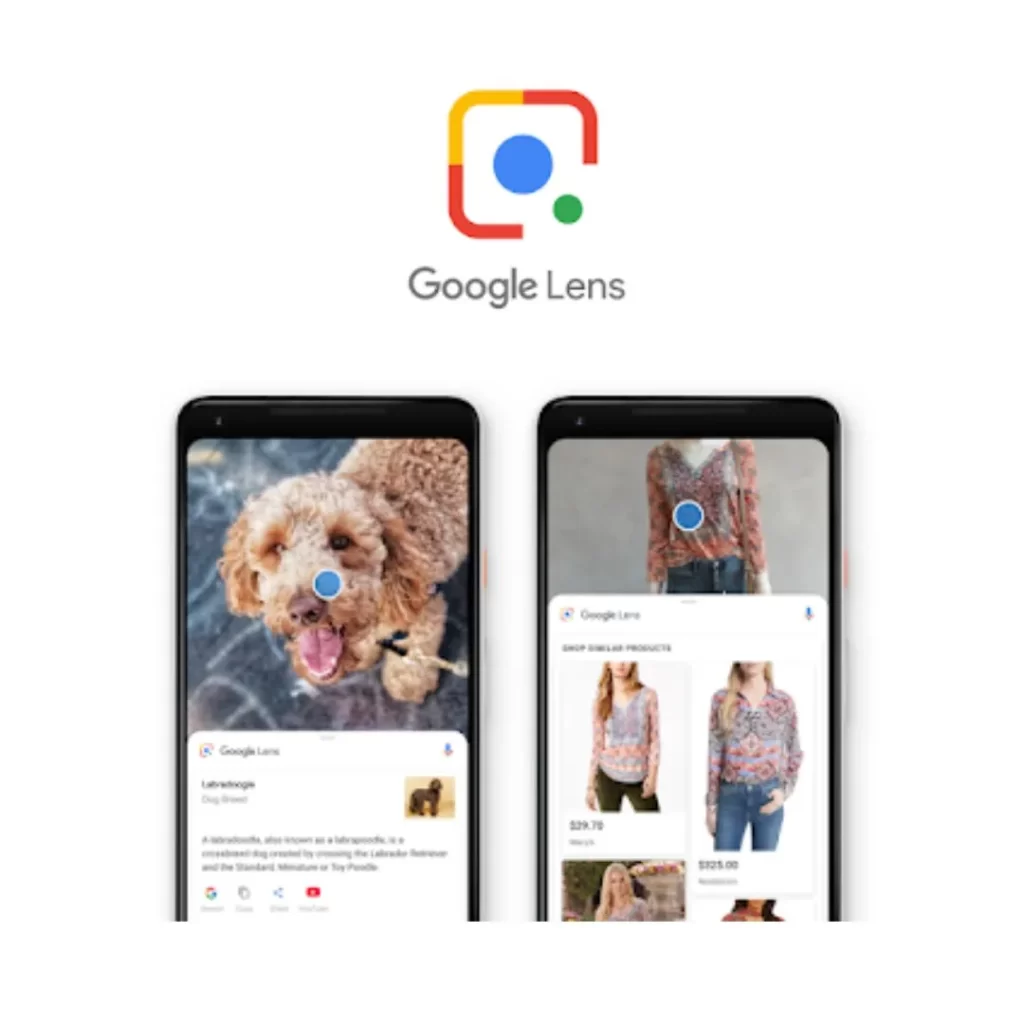In today’s digital landscape, the way we search for information has evolved dramatically. While traditional keyword-based searches have long been the norm, a new frontier in the world of online exploration has emerged—visual search.
In this blog post, we’ll embark on a journey to uncover the myriad benefits, invaluable tips, and unique challenges that this cutting-edge technology brings to the realm of marketing. Visual Search is not just a buzzword; it’s a transformative tool that’s reshaping how businesses connect with consumers in the digital age. Join us as we explore the exciting possibilities and practical strategies that Visual Search offers to marketers and discover how it can elevate your marketing efforts to new heights.
What is Visual Search?
Answer: In visual search, people can take a picture of an object they want to buy and they will find similar objects using Google Lens or Pinterest Lens – and find visually similar items available to purchase from the results page.
Visual search, often referred to as “search by image,” is a revolutionary technology that allows users to search the internet using images rather than traditional text-based queries. It’s a game-changer for those seeking a more intuitive and efficient way to find information and products.
How Does Visual Search Technology Work
Visual search technology is powered by cutting-edge artificial intelligence techniques, particularly computer vision and deep learning. This enables the system to analyze the content within an image and provide relevant search results based on that analysis. The applications of visual search span various industries, from retail to healthcare, revolutionizing the way businesses and consumers interact with online content.
Visual Search vs. Image Search: Understanding the Difference
While visual search and image search might seem similar, they serve distinct purposes. Visual search involves using digital cameras and image recognition to seek specific real-world or online products, often through a smartphone camera. Conversely, image search typically involves searching for images online using search engines like Google Images or Bing Images.
Exploring Popular Visual Search Platforms
Visual search has gained traction through several popular platforms, each offering unique features and benefits:
Bing Visual Search
This technology, integrated into the Bing search engine, provides users with relevant product information and pricing details when shopping intent is detected through image searches. Developers appreciate its flexibility in conveying specific user intentions.
Google Lens
Launched in 2017, Google Lens boasts advanced visual search capabilities and is widely used across various Google applications, including Google Photos, Google Search, and Google Assistant. Its ability to translate foreign text within images is particularly impressive.
Pinterest Lens
Introduced in 2017, Pinterest Lens is a powerhouse of visual search, recognizing over 2.5 billion items. Users can snap a photo of any object and find, save, or shop for items within the image. It’s a valuable tool for fashion brands, retailers, and home decor companies, with 90% of Pinterest users’ purchasing decisions informed by this technology.
Snapchat Camera Search
In 2018, Snapchat introduced Camera Search, allowing users to search for products on Amazon and other online stores using the Snapchat app. This feature recognizes barcodes and quickly directs users to product pages on Amazon if the app is installed on their devices.
Amazon StyleSnap
Amazon’s visual search app, launched in 2019, enables users to snap pictures of products within the Amazon mobile app, providing them with relevant information and similar product options. This tool is a boon for companies selling on Amazon, simplifying the path to customer engagement.
Best Practices for Harnessing Visual Search in Business
To fully capitalize on the potential of visual search, businesses should adopt the following best practices:
Use Descriptive Filenames for Images
Ensure that your image filenames are descriptive and provide context. Avoid generic filenames like “IMG_223.jpg” in favor of descriptive names like “boy-with-black-shades.jpg” to make images more discoverable.
Implement Alternative Text (Alt Text)
Alt text serves as a backup in case images fail to load, aiding search engines in understanding image context. It is also essential for screen reader users. Ensure alt text is honest, concise, and well-written.
Provide Thorough Meta-Descriptions
Create unique and informative meta descriptions for each image on your website to enhance search engine visibility.
Utilize Image Sitemaps
Implementing image sitemaps makes it easier for search engines like Google to discover, crawl, and index your images.
Choose Appropriate Image Size and Type
Optimize image size to improve loading speed and overall user experience. Slow-loading images can deter potential customers.
Visual Search in Marketing: Benefits, Tips, and Challenges
Benefits of Visual Search
The benefits of incorporating visual search into your marketing strategy are numerous:
Keeping Pace with Gen Z
With an increasing number of Generation Z consumers discovering brands exclusively through social applications. Making your brand discoverable through visual search is essential to capture this demographic.
Building Trust with Visual Discovery
Visual search builds trust with potential customers, offering a seamless and engaging way to find products and information.
Higher Conversions
Visual search often attracts users who have a specific product in mind, making them potential customers with a higher likelihood of conversion.
Optimized Visual Search Marketing
By optimizing your visual content marketing, you can ensure that your products and services stand a better chance of being featured in user search results.
Challenges of Visual Search
However, visual search is not without its challenges:
Technical Complexity
Developing AI-powered visual search technology is a complex process, requiring significant technical expertise.
Unclear Customer Needs
When users perform visual searches, their intentions may not always be clear, making it challenging to provide relevant results.
Limited User Adoption
Visual searches are not yet as widely used as keyword-based searches. That means a substantial portion of users still rely on traditional search methods.
Conclusion
Visual search is an exciting and evolving technology that simplifies how people find products and information using images. While traditional text-based searches are still prevalent, visual search is gaining traction rapidly. It offers businesses a unique opportunity to engage with consumers in a more intuitive and visually appealing way. As we move forward, visual search will continue to shape the future of online exploration. Making the search for products and information as simple as pointing and clicking.
To read such interesting articles on the latest technology and marketing follow our blog and YouTube channel to stay updated.
Do let us know in the comments how much you liked this blog post.

